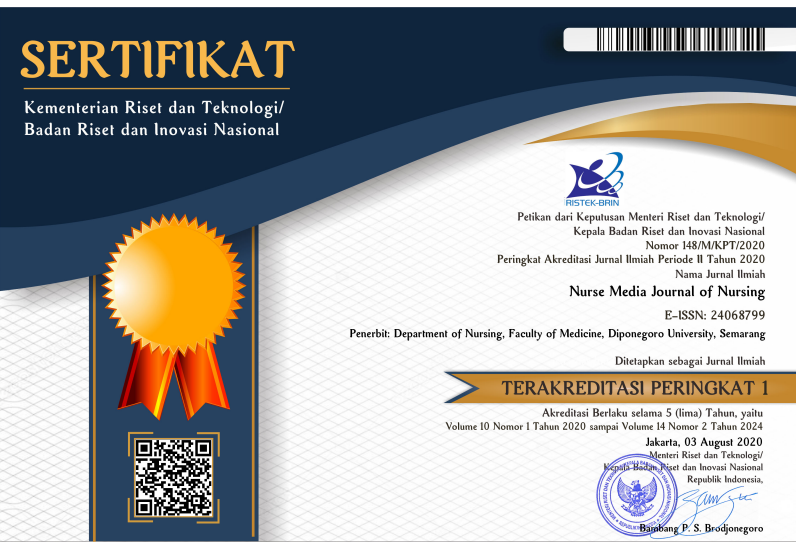Key Predictors of Medication Adherence Among Pulmonary Tuberculosis Patients: A Cross-Sectional Study in Palembang, Indonesia
Keywords:
Drug side effects, knowledge, medication adherence, support systems, tuberculosisAbstract
Background: Medication adherence remains a critical challenge in tuberculosis (TB) control, particularly in Indonesia, which ranks second globally in TB incidence. While previous studies have examined adherence factors worldwide, limited research has simultaneously evaluated the combined influence of sociodemographic, clinical, and psychosocial determinants in Indonesian settings, particularly using validated Indonesian-language instruments.
Purpose: This study aimed to identify and quantify key predictors of medication adherence among pulmonary TB patients in Palembang, Indonesia, with particular emphasis on sociodemographic factors, clinical variables, and psychosocial determinants.
Methods: A cross-sectional analytical study was conducted involving 150 pulmonary TB patients recruited through consecutive sampling at five public healthcare centers in Palembang. Data were collected using validated instruments, including the 8-item Morisky Medication Adherence Scale (MMAS-8) for adherence, the Knowledge About Tuberculosis Questionnaire (KATUB-Q) for TB knowledge, a structured questionnaire for side effects, the Treatment Motivation Questionnaire, the Multidimensional Scale of Perceived Social Support (MSPSS), and the TB-related Stigma Scale. Statistical analyses included descriptive statistics, Chi-square tests, and ordinal logistic regression to evaluate relationships between variables and adherence levels.
Results: Only 20% of participants demonstrated high adherence, while 50.7% exhibited low adherence. Significant predictors of adherence included early adulthood (OR = 0.061, 95% CI = 0.004–0.857, p = 0.038) and middle adulthood (OR = 0.052, 95% CI = 0.005–0.565, p = 0.015), indicating lower adherence compared to late elderly. Other predictors were poor TB knowledge (OR = 0.316, 95% CI = 0.154–0.650, p = 0.002), low motivation (OR = 0.244, 95% CI = 0.108–0.553, p < 0.001), limited family support (OR = 0.470, 95% CI = 0.232–0.952, p = 0.036), insufficient healthcare worker support (OR = 0.349, 95% CI = 0.204–0.840, p = 0.015), and the presence of drug side effects (OR = 5.294, 95% CI = 2.134–13.126, p < 0.001). Younger adults showed lower adherence rates compared to older populations, while patients with better knowledge and stronger support systems demonstrated higher adherence.
Conclusion: Key predictors of medication adherence were age, TB knowledge, motivation, family support, healthcare worker support, and drug side effects. Younger patients, those with poor knowledge, low motivation, weak support systems, and severe side effects demonstrated significantly lower adherence rates. These findings highlight the need for targeted, multifactorial interventions to improve TB treatment outcomes in Indonesia.
Downloads
References
1. Adima, F., & Arini, M. (2025). The influence of healthcare workers’ social support on compliance to medication in multi drug resistant tuberculosis patients at the Regional General Hospital of Dr. Saiful Anwar. Clinical Epidemiology and Global Health, 31. https://doi.org/10.1016/j.cegh.2024.101890
2. Adiutama, N. M., Amin, M., & Bakar, A. (2018). An Evaluation of Medication Adherence in Tuberculosis Patients Based on Theory of Planned Behavior. Proceedings of the 9th International Nursing Conference, 428–434. https://doi.org/10.5220/0008326204280434
3. Agustina, A. H., Purnama, A., & Koto, Y. (2024). Pengaruh Edukasi Berbasis Media Audiovisual terhadap Kepatuhan Minum Obat pada Pasien Tuberkulosis. Journal of Management Nursing, 3(3), 376–384. https://doi.org/10.53801/jmn.v3i3.188
4. Appiah, M. A., Arthur, J. A., Gborgblorvor, D., Asampong, E., Kye-Duodu, G., Kamau, E. M., & Dako-Gyeke, P. (2023). Barriers to tuberculosis treatment adherence in high-burden tuberculosis settings in Ashanti region, Ghana: a qualitative study from patient’s perspective. BMC Public Health, 23(1). https://doi.org/10.1186/s12889-023-16259-6
5. Ardian, M., Meokbun, E., Siburian, L., Malonda, E., Waramori, G., Penttinen, P., Lempoy, J., Kenangalem, E., Tjitra, E., & Kelly, P. M. (2007). A public-private partnership for TB control in Timika, Papua Province, Indonesia. International Journal of Tuberculosis and Lung Disease, 11(10), 1101–1107
6. Azizi, N., Karimy, M., & Salahshour, V. N. (2018). Determinants of adherence to tuberculosis treatment in Iranian patients: Application of health belief model. The Journal of Infection in Developing Countries, 12(09), 706–711. https://doi.org/10.3855/jidc.9653
7. Bajrami, R., Mulliqi, G., Kurti, A., Lila, G., & Raka, L. (2019). Drug resistance profile of Mycobacterium tuberculosis isolates from patients referred to tuberculosis reference laboratory in Kosovo. International Journal of Mycobacteriology, 8(1), 22–24. https://doi.org/10.4103/ijmy.ijmy_16_19
8. Basnyat, B., Caws, M., & Udwadia, Z. (2018). Tuberculosis in South Asia: A tide in the affairs of men. Multidisciplinary Respiratory Medicine, 13(1). https://doi.org/10.1186/s40248-018-0122-y
9. Bea, S., Lee, H., Kim, J. H., Jang, S. H., Son, H., Kwon, J.-W., & Shin, J.-Y. (2021). Adherence and Associated Factors of Treatment Regimen in Drug-Susceptible Tuberculosis Patients. Frontiers in Pharmacology, 12. https://doi.org/10.3389/fphar.2021.625078
10. Bhatia, V., Srivastava, R., Reddy, K. S., Sharma, M., Mandal, P. P., Chhabra, N., Jhalani, S., Mandal, S., Arinaminpathy, N., Aditama, T. Y., Aditama, T. Y., & Sarkar, S. (2020). Ending TB in Southeast Asia: Current resources are not enough. BMJ Global Health, 5(3). https://doi.org/10.1136/bmjgh-2019-002073
11. Chee, C. B.-E., Khinmar, K. W., Cutter, J., & Wang, Y. T. (2012). The imminent threat of multidrug-resistant tuberculosis in Singapore. Singapore Medical Journal, 53(4), 238–240
12. Chen, H., Cheng, J., Wang, L., & Zhang, H. (2021). Tuberculosis in areas and countries along the China–Proposed Belt and Road Initiative. Biosafety and Health, 3(6), 319–324. https://doi.org/10.1016/j.bsheal.2021.10.001
13. Chen, X., Du, L., Wu, R., Xu, J., Ji, H., Zhang, Y., Zhu, X., & Zhou, L. (2020). The effects of family, society and national policy support on treatment adherence among newly diagnosed tuberculosis patients: A cross-sectional study. BMC Infectious Diseases, 20(1). https://doi.org/10.1186/s12879-020-05354-3
14. Chen, Y., Chen, W., Cheng, Z., Chen, Y., Li, M., Ma, L., Zhou, N., Qian, J., Zhu, Y., & Liu, C. (2024). Global burden of HIV-negative multidrug- and extensively drug-resistant tuberculosis based on Global Burden of Disease Study 2021. Science in One Health, 3. https://doi.org/10.1016/j.soh.2024.100072
15. Choi, J., Park, J., Son, Y., Kim, S., Kwon, R., Lee, H., Rahmati, M., Kang, J., Woo, H. G., Koyanagi, A., Shin, J. I., & Yon, D. K. (2024). Sex differences in the global burden of multidrug-resistant tuberculosis without extensive drug resistance in the general population and people living with HIV/AIDS, 1990-2019. European Review for Medical and Pharmacological Sciences, 28(10), 3669–3682. https://doi.org/10.26355/eurrev_202405_36304
16. da Silva, R. D., de Luna, F. D. T., de Araújo, A. J., Camêlo, E. L. S., Bertolozzi, M. R., Hino, P., Lacerda, S. N. B., Fook, S. M. L., & de Figueiredo, T. M. R. M. (2017). Patients’ perception regarding the influence of individual and social vulnerabilities on the adherence to tuberculosis treatment: a qualitative study. BMC Public Health, 17(1), 725. https://doi.org/10.1186/s12889-017-4752-3
17. Fagundez, G., Perez-Freixo, H., Eyene, J., Momo, J. C., Biyé, L., Esono, T., Ondó Mba Ayecab, M., Benito, A., Aparicio, P., & Herrador, Z. (2016). Treatment Adherence of Tuberculosis Patients Attending Two Reference Units in Equatorial Guinea. PLOS ONE, 11(9), e0161995. https://doi.org/10.1371/journal.pone.0161995
18. Faraade, M. H., Jeffree, M. S., Lin, L. J., Fiidow, O. A., Avoi, R., PASUPULETI, V. R., & Hassan, M. R. (2022). Intervention approaches of stigma related to tuberculosis in developing countries: a systematic review. Malaysian Journal of Public Health Medicine, 22(2), 197–204. https://doi.org/10.37268/mjphm/vol.22/no.2/art.1753
19. Fekadu, G., Bekele, F., Bekele, K., Girma, T., Mosisa, G., Gebre, M., Alemu, T., Tekle, T., Gamachu, B., & Diriba, A. (2020). Adherence to Anti-Tuberculosis Treatment Among Pediatric Patients at Nekemte Specialized Hospital, Western Ethiopia. Patient Preference and Adherence, Volume 14, 1259–1265. https://doi.org/10.2147/PPA.S258292
20. Fuadiati, L. L., Sukartini, T., Makhfudli, M., Dewi, Y. S., Rosyid, A. N., & Qona’ah, A. (2024). Development of an EKA application to help tuberculosis patients improve medication adherence and self efficacy. International Journal of Public Health Science (IJPHS), 13(1), 76. https://doi.org/10.11591/ijphs.v13i1.23309
21. Fuady, A., Houweling, T. A. J., Mansyur, M., Burhan, E., & Richardus, J. H. (2020). Catastrophic costs due to tuberculosis worsen treatment outcomes: A prospective cohort study in Indonesia. Transactions of the Royal Society of Tropical Medicine and Hygiene, 114(9), 666–673. https://doi.org/10.1093/trstmh/traa038
22. Garcia-Cremades, M., Solans, B. P., Strydom, N., Vrijens, B., Pillai, G. C., Shaffer, C., Thomas, B., & Savic, R. M. (2022). Emerging Therapeutics, Technologies, and Drug Development Strategies to Address Patient Nonadherence and Improve Tuberculosis Treatment. In Annual Review of Pharmacology and Toxicology (Vol. 62). https://doi.org/10.1146/annurev-pharmtox-041921-074800
23. Ghozali, M. T., & Murani, C. T. (2023). Relationship between knowledge and medication adherence among patients with tuberculosis: a cross-sectional survey. Bali Medical Journal, 12(1), 158–163. https://doi.org/10.15562/bmj.v12i1.3826
24. Gube, A. A., Debalkie, M., Seid, K., Bisete, K., Mengesha, A., Zeynu, A., Shimelis, F., & Gebremeskel, F. (2018). Assessment of Anti-TB Drug Nonadherence and Associated Factors among TB Patients Attending TB Clinics in Arba Minch Governmental Health Institutions, Southern Ethiopia. Tuberculosis Research and Treatment, 2018, 1–7. https://doi.org/10.1155/2018/3705812
25. Gugssa Boru, C., Shimels, T., & Bilal, A. I. (2017). Factors contributing to non-adherence with treatment among TB patients in Sodo Woreda, Gurage Zone, Southern Ethiopia: A qualitative study. Journal of Infection and Public Health, 10(5), 527–533. https://doi.org/10.1016/j.jiph.2016.11.018
26. Gurusinga, R., Afrizal, A., Bachtiar, A., Firdawati, F., Machmud, R., Burhan, E., Jendrius, J., & Semiarty, R. (2024). The relationship between family support and treatment adherence in patients with tuberculosis in Deli Serdang Regency, Indonesia, 2022: A cross-sectional study. Nursing and Midwifery Studies, 3(13). https://doi.org/10.48307/nms.2024.441017.1351
27. Islam, F., Ahmad, H., Nurbaya, Ahmad, M., Ansar, Ramadhan, K., Syukri, M., Arrazy, S., Aji Perdana, A., Siregar, D., Ade Ningsih, N., Dwi Astuti, I., Kadijah Hamid, St., & Hamonangan Pasaribu, A. (2024). Factors Affecting Treatment Adherence Among Patients with Tuberculosis in Indonesia: Literature Review. Journal of Public Health and Pharmacy, 4(1), 28–37. https://doi.org/10.56338/jphp.v4i1.5022
28. Islam, F., Ahmad, H., Nurbaya, Ahmad, M., Ansar, Ramadhan, K., Syukri, M., Arrazy, S., Perdana, A. A., Siregar, D., Hamid, S. K., & Pasaribu, A. H. (2024). Factors Affecting Treatment Adherence Among Patients with Tuberculosis in Indonesia: Literature Review. Journal of Public Health and Pharmacy, 4(1), 28–37. https://doi.org/10.56338/jphp.v4i1.5022
29. Ismail, A., Prasetya, H., & Ichsan, B. (2023). Meta-Analysis: Drug Side Effect, Smoking, Alcohol Consumptions and Their Relationships with Drug Taking Adherence in Tuberkulosis Patients. Journal of Epidemiology and Public Health, 8(3), 383–395. https://doi.org/10.26911/jepublichealth.2023.08.03.09
30. Jiang, W., Trimawartinah, Rahman, F. M., Wibowo, A., Sanjaya, A., Silitonga, P. I. I., Tang, S., & Long, Q. (2022). The co-management of tuberculosis-diabetes co-morbidities in Indonesia under the National Tuberculosis Control Program: results from a cross-sectional study from 2017 to 2019. BMC Public Health, 22(1). https://doi.org/10.1186/s12889-022-13017-y
31. Johns, B., Probandari, A., Mahendradhata, Y., & Ahmad, R. A. (2009). An analysis of the costs and treatment success of collaborative arrangements among public and private providers for tuberculosis control in Indonesia. Health Policy, 93(2–3), 214–224. https://doi.org/10.1016/j.healthpol.2009.08.004
32. Kaaffah, S., Kusuma, I. Y., Renaldi, F. S., Pratiwi, A. D. E., Bahar, M. A., & Lestari, Y. E. (2023). Knowledge, Attitudes, and Perceptions of Tuberculosis in Indonesia: A Multi-Center Cross-Sectional Study. Infection and Drug Resistance, 16, 1787–1800. https://doi.org/10.2147/IDR.S404171
33. Kipp, A. M., Pungrassami, P., Stewart, P. W., Chongsuvivatwong, V., Strauss, R. P., & Van Rie, A. (2011). Study of tuberculosis and AIDS stigma as barriers to tuberculosis treatment adherence using validated stigma scales. The International Journal of Tuberculosis and Lung Disease, 15(11), 1540–1546. https://doi.org/10.5588/ijtld.10.0273
34. Kulkarni, P., Akarte, S., Mankeshwar, R., Bhawalkar, J., Banerjee, A., & Kulkarni, A. (2013). Non-Adherence of New Pulmonary Tuberculosis Patients to Anti-Tuberculosis Treatment. Annals of Medical and Health Sciences Research, 3(1), 67. https://doi.org/10.4103/2141-9248.109507
35. Kusuma, I. Y., Triwibowo, D. N., Pratiwi, A. D. E., & Pitaloka, D. A. E. (2022). Rasch Modelling to Assess Psychometric Validation of the Knowledge about Tuberculosis Questionnaire (KATUB-Q) for the General Population in Indonesia. International Journal of Environmental Research and Public Health, 19(24). https://doi.org/10.3390/ijerph192416753
36. Lestari, T., Fuady, A., Yani, F. F., Putra, I. W. G. A. E., Pradipta, I. S., Chaidir, L., Handayani, D., Fitriangga, A., Loprang, M. R., Pambudi, I., Ruslami, R., & Probandari, A. (2023). The development of the national tuberculosis research priority in Indonesia: A comprehensive mixed-method approach. PLoS ONE, 18(2 February). https://doi.org/10.1371/journal.pone.0281591
37. Lestari, Y. P., Sukartini, T., & Makhfudli, M. (2020). The correlation of family support and health worker support with medication adherence of TB patients at Puskesmas (public health service) Taman. Critical Medical and Surgical Nursing Journal, 9(2), 41. https://doi.org/10.20473/cmsnj.v9i2.21533
38. Machlaurin, A., Dolk, F. C. K., Setiawan, D., van der Werf, T. S., & Postma, M. J. (2020). Cost-effectiveness analysis of bcg vaccination against tuberculosis in indonesia: A model-based study. Vaccines, 8(4), 1–14. https://doi.org/10.3390/vaccines8040707
39. Mahendradhata, Y., Probandari, A., Widjanarko, B., Riono, P., Mustikawati, D., Tiemersma, E. W., & Alisjahbana, B. (2014). Embedding operational research into national disease control programme: Lessons from 10 years of experience in Indonesia. Global Health Action, 7(1). https://doi.org/10.3402/gha.v7.25412
40. Maifitrianti, M., Wiyati, T., & Hasanah, N. (2024). Relationship between Patients’ Knowledge and Medication Adherence of Tuberculosis at Islamic Hospital Pondok Kopi Jakarta. Journal of Management and Pharmacy Practice, 14(1), 69. https://doi.org/10.22146/jmpf.86864
41. Marlianasyam, S., Djuwita, R., & Damanik, B. J. K. (2024). A Descriptive Epidemiological Tuberculosis in Purwakarta District, 2020-2023. Media Publikasi Promosi Kesehatan Indonesia, 7(6), 1621–1626. https://doi.org/10.56338/mppki.v7i6.5287
42. Morisky, D. E., Ang, A., Krousel‐Wood, M., & Ward, H. J. (2008). Retracted: Predictive Validity of a Medication Adherence Measure in an Outpatient Setting. The Journal of Clinical Hypertension, 10(5), 348–354. https://doi.org/10.1111/j.1751-7176.2008.07572.x
43. Munro, S. A., Lewin, S. A., Smith, H. J., Engel, M. E., Fretheim, A., & Volmink, J. (2007). Patient adherence to tuberculosis treatment: A systematic review of qualitative research. PLoS Medicine, 4(7), 1230–1245. https://doi.org/10.1371/journal.pmed.0040238
44. Musiimenta, A., Tumuhimbise, W., Atukunda, E., Mugaba, A., Linnemayr, S., & Haberer, J. (2024). Digital Adherence Technologies Linked to Mobile Money Incentives for Medication Adherence Among People Living with Tuberculosis: Mixed Methods Feasibility and Acceptability Study. JMIR Human Factors, 11, e47996. https://doi.org/10.2196/47996
45. Nabillah, L., Demartoto, A., & Murti, B. (2022). Meta-Analysis: The Effect of Social Support on Medication Treatment Adherence in Tuberculosis Patients. Journal of Health Promotion and Behavior, 7(3), 250–261. https://doi.org/10.26911/thejhpb.2022.07.03.07
46. Noviyani, A., Nopsopon, T., & Pongpirul, K. (2021). Variation of tuberculosis prevalence across diagnostic approaches and geographical areas of Indonesia. PLoS ONE, 16(10 October). https://doi.org/10.1371/journal.pone.0258809
47. Okada, K. (2016). Epidemiological situation of tuberculosis in Asia. Japanese Journal of Chest Diseases, 75(5), 495–507
48. Pradhan, A., Koirala, P., Bhandari, S. S., Dutta, S., García-Grau, P., Sampath, H., & Sharma, I. (2022). Internalized and Perceived Stigma and Depression in Pulmonary Tuberculosis: Do They Explain the Relationship Between Drug Sensitivity Status and Adherence? Frontiers in Psychiatry, 13. https://doi.org/10.3389/fpsyt.2022.869647
49. Pradipta, I. S., Houtsma, D., van Boven, J. F. M., Alffenaar, J.-W. C., & Hak, E. (2020). Interventions to improve medication adherence in tuberculosis patients: a systematic review of randomized controlled studies. Npj Primary Care Respiratory Medicine, 30(1). https://doi.org/10.1038/s41533-020-0179-x
50. Pramono, J. S., Noorma, N., Gandini, A. L. A., & Fitriani, S. (2021). The Effect of Side Effects Tuberculosis Treatment in the Early Stage Towards Compliance with Tuberculosis Patients. Health Notions, 5(01), 29–32. https://doi.org/10.33846/hn50106
51. Probandari, A., Widjanarko, B., Mahendradhata, Y., Sanjoto, H., Cerisha, A., Nungky, S., Riono, P., Simon, S., Farid, M. N., Giriputra, S., Tiemersma, E. W., & Alisjahbana, B. (2016). The path to impact of operational research on tuberculosis control policies and practices in Indonesia. Global Health Action, 9(1). https://doi.org/10.3402/gha.v9.29866
52. Qiu, L., Tong, Y., Lu, Z., Gong, Y., & Yin, X. (2019). Depressive Symptoms Mediate the Associations of Stigma with Medication Adherence and Quality of Life in Tuberculosis Patients in China. The American Journal of Tropical Medicine and Hygiene, 100(1), 31–36. https://doi.org/10.4269/ajtmh.18-0324
53. Qomariyah, F. N., & Piyabanditkul, L. (2023). Association between Health Literacy and Medication Adherence among Pulmonary Tuberculosis Patients Using Four Domains of the Integrated Health Literacy Model in Jember Regency, Indonesia. Journal of Health Literacy, 8(3), 9–21. https://doi.org/10.22038/jhl.2023.71529.1408
54. Salvadila, N. K. A. S., Darmini, A. A. A. Y., Suantika, P. I. R., & Megayanti, S. D. (2023). Hubungan pengetahuan dan motivasi terhadap kepatuhan berobat pasien tuberkulosis paru pada masa pandemic covid-19. Jurnal Persatuan Perawat Nasional Indonesia (JPPNI), 8(2), 64. https://doi.org/10.32419/jppni.v8i2.387
55. Sarfika, R., Sulistiawati, Afriyanti, E., & Saifudin, I. M. Moh. Y. (2023). Self-Care Behavior among Adult Patients with Hypertension in Padang, West Sumatra, Indonesia: A Cross-Sectional Study. Belitung Nursing Journal, 9(6), 595–602. https://doi.org/10.33546/bnj.2915
56. Sartika, I., Insani, W. N., & Abdulah, R. (2019). Assessment of Health-Related Quality of Life among Tuberculosis Patients in a Public Primary Care Facility in Indonesia. Journal of Global Infectious Diseases, 11(3), 102–106. https://doi.org/10.4103/jgid.jgid_136_18
57. Sarumpaet, S., & Syarifah. (2019). Correlation between pulmonary tuberculosis (TB) patient’s characteristics and role of supervisor of drugs swallowing (PMO) with the risk of transmission in medan city 2017. Indian Journal of Public Health Research and Development, 10(1), 1209–1213. https://doi.org/10.5958/0976-5506.2019.00220.1
58. Setiyadi, N. A., Wijayanti, A. C., Asyfiradayati, R., Bagaskoro, A., Widodo, W., & Soni, P. (2020). Prevalence of drug resistant of tuberculosis suspect: A district Central Java, Indonesia. Annals of Tropical Medicine and Public Health, 23(3), 134–144. https://doi.org/10.36295/ASRO.2020.2337
59. Shinde, A. M. (2024). Socio-demographic factors & adherence of newly diagnosed pulmonary tuberculosis patients to the newly introduced daily regimen: A hospital survey based follow up study. Indian Journal of Tuberculosis, 71, S250–S257. https://doi.org/10.1016/j.ijtb.2024.03.011
60. Skinner, D., & Claassens, M. (2016). It’s complicated: why do tuberculosis patients not initiate or stay adherent to treatment? A qualitative study from South Africa. BMC Infectious Diseases, 16(1), 712. https://doi.org/10.1186/s12879-016-2054-5
61. Soleman, R. P. H., Sukartini, T., & Qona’ah, A. (2021). Patient Adherence to Tuberculosis Treatment: A Relation between Family Support and Patient Behavior. Critical Medical and Surgical Nursing Journal, 10(2), 42. https://doi.org/10.20473/cmsnj.v10i2.26491
62. Story, A. (2021). Tuberculosis Treatment and Adherence. In Essential Tuberculosis. https://doi.org/10.1007/978-3-030-66703-0_19
63. Thiruvalluvan, E., Thomas, B., Suresh, C., Sellappan, S., Muniyandi, M., & Watson, B. (2017). The psychosocial challenges facing multi drug resistance tuberculosis patients: a qualitative study. SAARC Journal of Tuberculosis, Lung Diseases and HIV/AIDS, 14(1), 14–21. https://doi.org/10.3126/saarctb.v14i1.17724
64. Tirore, L. L., Ersido, T., Beyene Handiso, T., & Shiferaw Areba, A. (2024). Non-adherence to anti-tuberculosis treatment and associated factors among TB patients in public health facilities of Hossana town, Southern Ethiopia, 2022. Frontiers in Medicine, 11. https://doi.org/10.3389/fmed.2024.1360351
65. Van Rie, A., Sengupta, S., Pungrassami, P., Balthip, Q., Choonuan, S., Kasetjaroen, Y., Strauss, R. P., & Chongsuvivatwong, V. (2008). Measuring stigma associated with tuberculosis and HIV/AIDS in southern Thailand: Exploratory and confirmatory factor analyses of two new scales. Tropical Medicine and International Health, 13(1), 21–30. https://doi.org/10.1111/j.1365-3156.2007.01971.x
66. Vandenbroucke, J. P., von Elm, E., Altman, D. G., Gøtzsche, P. C., Mulrow, C. D., Pocock, S. J., Poole, C., Schlesselman, J. J., & Egger, M. (2007). Strengthening the Reporting of Observational Studies in Epidemiology (STROBE): Explanation and Elaboration. PLoS Medicine, 4(10), e297. https://doi.org/10.1371/journal.pmed.0040297
67. Widianingrum, T. R. (2017). Hubungan pengetahuan dan motivasi dengan kepatuhan minum obat anti tuberkulosis pada pasien TB di wilayah kerja puskesmas Perak Timur Surabaya. Universitas Airlangga
68. Widiastutik, G. K., Makhfudli, M., & Wahyuni, S. D. (2020). Hubungan Dukungan Keluarga, Kader dan Petugas Kesehatan dengan Kepatuhan Berobat Penderita TB Paru. Indonesian Journal of Community Health Nursing, 5(1), 41. https://doi.org/10.20473/ijchn.v5i1.18654
69. Winardi, W., Wahyuni, H., Hidayat, M., Wirawan, A., Nurwidya, F., Uddin, F., & Yusup, M. (2022). Challenges on tuberculosis care in health care facilities during COVID-19 pandemic: Indonesian perspective. Narra J, 2(2). https://doi.org/10.52225/narra.v2i2.80
70. Yadav, R. K., Kaphle, H. P., Yadav, D. K., Gurung, S. C., Khatri, E., & Baral, S. (2020). Factors Associated with Treatment Adherence among Tuberculosis Patients in Gandaki Province of Nepal. SAARC Journal of Tuberculosis, Lung Diseases and HIV/AIDS, 18(1), 8–21. https://doi.org/10.3126/saarctb.v18i1.34128
71. Yang, H., Ruan, X., Li, W., Xiong, J., & Zheng, Y. (2024). Global, regional, and national burden of tuberculosis and attributable risk factors for 204 countries and territories, 1990–2021: a systematic analysis for the Global Burden of Diseases 2021 study. BMC Public Health, 24(1). https://doi.org/10.1186/s12889-024-20664-w
72. Zegeye, A., Dessie, G., Wagnew, F., Gebrie, A., Islam, S. M. S., Tesfaye, B., & Kiross, D. (2019). Prevalence and determinants of anti-tuberculosis treatment non-adherence in Ethiopia: A systematic review and meta-analysis. PLOS ONE, 14(1), e0210422. https://doi.org/10.1371/journal.pone.0210422






